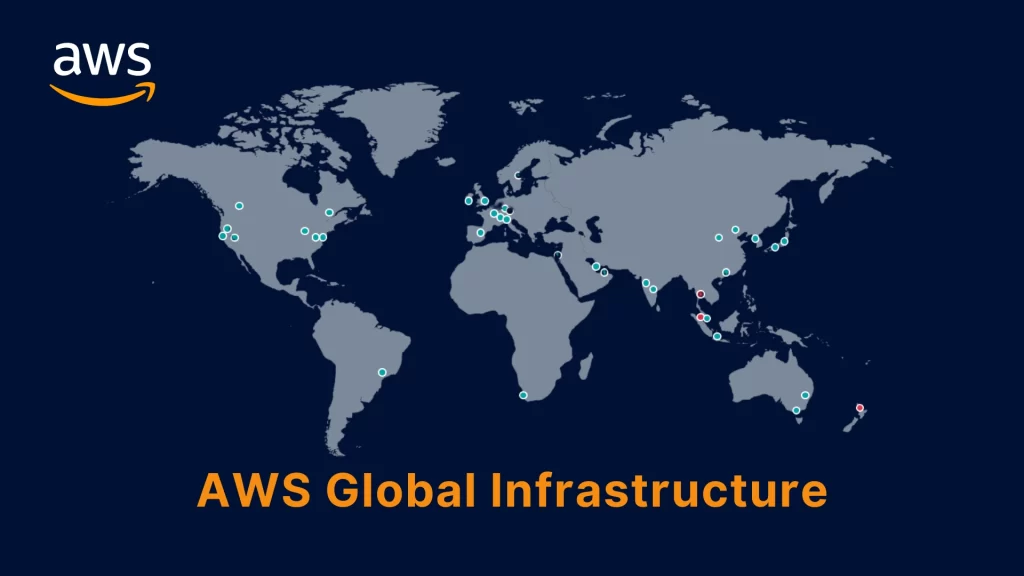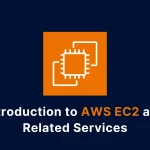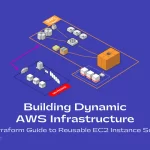AWS Global Infrastructure is the term used to describe the network of data centers, edge locations, and points of presence (PoPs) that AWS operates around the world. It is the foundation of AWS cloud services, providing high availability, low latency, and scalability for millions of customers and applications.
In this blog post, we will explore the main components and benefits of AWS Global Infrastructure, and how it can help you achieve your business goals.
Components of AWS Global Infrastructure
AWS Global Infrastructure consists of four main components: Regions, Availability Zones, Local Zones, and Wavelength Zones.
Regions
A Region is a geographic area that contains multiple Availability Zones. AWS currently has 33 launched Regions, with plans for 4 more in Germany, Malaysia, New Zealand, and Thailand. Each Region is fully isolated and independent from the others, ensuring fault tolerance and data sovereignty.
Availability Zones
An Availability Zone (AZ) is a physically separate location within a Region that contains one or more data centers. Each AZ has its own power, cooling, networking, and security infrastructure, and is connected to other AZs in the same Region by low-latency, high-bandwidth links. AWS has 105 launched AZs, with plans for 12 more. By distributing your resources across multiple AZs, you can achieve high availability and resilience for your applications.
Local Zones
A Local Zone is an extension of a Region that is located closer to a large metropolitan area, such as Los Angeles, New York, or London. A Local Zone provides single-digit millisecond latency to end users and applications in the area, while still being connected to the parent Region for access to the full range of AWS services.
AWS has 36 launched Local Zones, with plans for more. By using Local Zones, you can deliver fast and responsive user experiences for latency-sensitive applications, such as gaming, media streaming, or machine learning.
Wavelength Zones
A Wavelength Zone is a deployment of AWS infrastructure at the edge of a mobile network operator’s 5G network. A Wavelength Zone enables you to run applications that require ultra-low latency and high bandwidth, such as augmented reality, virtual reality, or autonomous vehicles, on the 5G network.
AWS has 29 launched Wavelength Zones, with plans for more. By using Wavelength Zones, you can deliver immersive and interactive experiences for 5G users and devices.
Points of Presence
Points of Presence (PoPs) are part of the AWS Global Infrastructure that hosts AWS services such as CloudFront, Route 53, and Global Accelerator. PoPs are located closer to the end users than Regions or Availability Zones and provide low latency and high bandwidth for content delivery and edge computing. As of now, there are 600+ PoPs in 90 cities across 48 countries
Benefits of AWS Global Infrastructure
AWS Global Infrastructure offers many benefits for customers and applications, such as:
- Security: AWS Global Infrastructure is designed to meet the most stringent security requirements in the world, with encryption, firewalls, access control, compliance, and auditing features. You can also choose where to store and process your data, and who can access it, to comply with local regulations and preferences.
- Performance: AWS Global Infrastructure provides fast and consistent performance for your applications, with low latency, high bandwidth, and optimized routing. You can also leverage AWS services, such as CloudFront, Route 53, and Global Accelerator, to further improve the speed and reliability of your content delivery.
- Scalability: AWS Global Infrastructure allows you to scale your applications up or down, depending on your demand, without compromising on quality or cost. You can also take advantage of AWS services, such as Auto Scaling, Elastic Load Balancing, and Lambda, to automate and optimize your scaling decisions.
- Innovation: AWS Global Infrastructure enables you to innovate faster and easier, with access to over 200 fully featured services, from compute, storage, and database, to analytics, machine learning, and blockchain. You can also use AWS services, such as CloudFormation, CodeDeploy, and Cloud9, to simplify and accelerate your development and deployment processes.
Final Thoughts
AWS Global Infrastructure is the backbone of AWS cloud services, providing a secure, performant, scalable, and innovative platform for your applications and business needs. By understanding the components and benefits of AWS Global Infrastructure, you can make informed decisions on how to best leverage it for your use cases and goals.
I hope you found this blog post helpful. If you have any questions or feedback, please let me know in the comment section.







